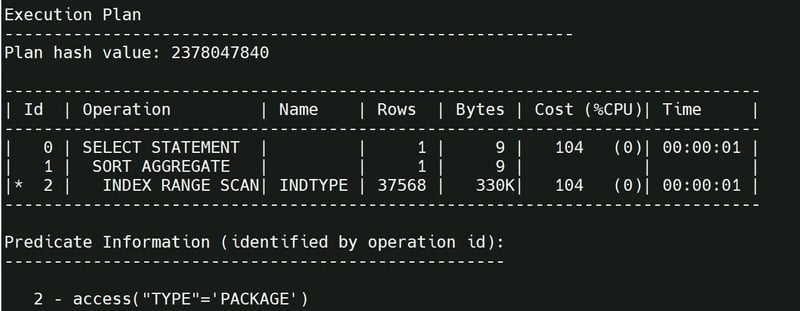Breaking Down a Kubernetes Manifest File: Eureka Server Deployment & Service
Kubernetes makes it easy to deploy and manage containerized applications, but understanding its manifest files is crucial for effective orchestration. In this blog, we'll break down a Kubernetes manifest file that defines a Deployment and a Service for a Eureka Server instance. Understanding the Manifest File This YAML file consists of two key Kubernetes resources: Deployment: Defines how the Eureka Server container should be deployed. Service: Exposes the Eureka Server for external access. Let's analyze each section in detail. 1. Deployment Configuration The first part of the YAML file describes a Deployment, which ensures the Eureka Server container runs in a managed and scalable manner. apiVersion: apps/v1 kind: Deployment metadata: name: eurekaserver-deployment labels: app: eurekaserver apiVersion: apps/v1 → Specifies that this is a Deployment resource. kind: Deployment → Defines this resource as a Deployment. metadata → Contains identifying information. name: eurekaserver-deployment → Names the deployment. labels: app: eurekaserver → Labels help Kubernetes group and select resources. Replica Configuration spec: replicas: 1 selector: matchLabels: app: eurekaserver replicas: 1 → Defines the number of pod instances to run (here, just one). selector: matchLabels: app: eurekaserver → Ensures this deployment manages pods with the label app: eurekaserver. Pod Template Definition template: metadata: labels: app: eurekaserver template → Defines the blueprint for the pods created by this deployment. labels → Ensures that the created pods match the selector (app: eurekaserver). Container Specification spec: containers: - name: eurekaserver image: eazybytes/eurekaserver:s12 ports: - containerPort: 8070 containers → Defines the containers within the pod. name: eurekaserver → Names the container. image: eazybytes/eurekaserver:s12 → Specifies the Docker image for the container. ports: containerPort: 8070 → Exposes port 8070 inside the container. Environment Variables (From ConfigMap) env: - name: SPRING_APPLICATION_NAME valueFrom: configMapKeyRef: name: eazybank-configmap key: EUREKA_APPLICATION_NAME - name: SPRING_CONFIG_IMPORT valueFrom: configMapKeyRef: name: eazybank-configmap key: SPRING_CONFIG_IMPORT env → Defines environment variables for the container. valueFrom.configMapKeyRef → Fetches values from a ConfigMap (eazybank-configmap) instead of hardcoding them. SPRING_APPLICATION_NAME and SPRING_CONFIG_IMPORT are dynamically set using the respective keys from the ConfigMap. 2. Service Configuration The second part of the YAML file defines a Service that makes the Eureka Server accessible. apiVersion: v1 kind: Service metadata: name: eurekaserver apiVersion: v1 → Indicates that this is a Service resource. kind: Service → Defines this resource as a Service. metadata: name: eurekaserver → Names the service. Service Selector & Type spec: selector: app: eurekaserver type: LoadBalancer selector: app: eurekaserver → Ensures that this service targets pods labeled app: eurekaserver. type: LoadBalancer → Exposes the service externally with a cloud provider’s load balancer. Service Port Configuration ports: - protocol: TCP port: 8070 targetPort: 8070 protocol: TCP → Defines TCP as the communication protocol. port: 8070 → The port on which the service is exposed. targetPort: 8070 → The port inside the pod to which traffic should be directed. How This Works Together Deployment ensures that an instance of the Eureka Server container is running. The Service exposes the Eureka Server, allowing other applications to register and communicate with it. ConfigMap Integration keeps configurations dynamic, allowing changes without modifying the container image. Conclusion This Kubernetes manifest file provides a complete setup for deploying and exposing a Eureka Server. By understanding each section, you can modify and scale this setup for your microservices architecture. Would you like to see a more advanced version, such as adding Horizontal Pod Autoscaling or Ingress Configuration? Let me know in the comments!

Kubernetes makes it easy to deploy and manage containerized applications, but understanding its manifest files is crucial for effective orchestration. In this blog, we'll break down a Kubernetes manifest file that defines a Deployment and a Service for a Eureka Server instance.
Understanding the Manifest File
This YAML file consists of two key Kubernetes resources:
- Deployment: Defines how the Eureka Server container should be deployed.
- Service: Exposes the Eureka Server for external access.
Let's analyze each section in detail.
1. Deployment Configuration
The first part of the YAML file describes a Deployment, which ensures the Eureka Server container runs in a managed and scalable manner.
apiVersion: apps/v1
kind: Deployment
metadata:
name: eurekaserver-deployment
labels:
app: eurekaserver
-
apiVersion: apps/v1→ Specifies that this is a Deployment resource. -
kind: Deployment→ Defines this resource as a Deployment. -
metadata→ Contains identifying information.-
name: eurekaserver-deployment→ Names the deployment. -
labels: app: eurekaserver→ Labels help Kubernetes group and select resources.
-
Replica Configuration
spec:
replicas: 1
selector:
matchLabels:
app: eurekaserver
-
replicas: 1→ Defines the number of pod instances to run (here, just one). -
selector: matchLabels: app: eurekaserver→ Ensures this deployment manages pods with the labelapp: eurekaserver.
Pod Template Definition
template:
metadata:
labels:
app: eurekaserver
-
template→ Defines the blueprint for the pods created by this deployment. -
labels→ Ensures that the created pods match the selector (app: eurekaserver).
Container Specification
spec:
containers:
- name: eurekaserver
image: eazybytes/eurekaserver:s12
ports:
- containerPort: 8070
-
containers→ Defines the containers within the pod. -
name: eurekaserver→ Names the container. -
image: eazybytes/eurekaserver:s12→ Specifies the Docker image for the container. -
ports: containerPort: 8070→ Exposes port 8070 inside the container.
Environment Variables (From ConfigMap)
env:
- name: SPRING_APPLICATION_NAME
valueFrom:
configMapKeyRef:
name: eazybank-configmap
key: EUREKA_APPLICATION_NAME
- name: SPRING_CONFIG_IMPORT
valueFrom:
configMapKeyRef:
name: eazybank-configmap
key: SPRING_CONFIG_IMPORT
-
env→ Defines environment variables for the container. -
valueFrom.configMapKeyRef→ Fetches values from a ConfigMap (eazybank-configmap) instead of hardcoding them. -
SPRING_APPLICATION_NAMEandSPRING_CONFIG_IMPORTare dynamically set using the respective keys from the ConfigMap.
2. Service Configuration
The second part of the YAML file defines a Service that makes the Eureka Server accessible.
apiVersion: v1
kind: Service
metadata:
name: eurekaserver
-
apiVersion: v1→ Indicates that this is a Service resource. -
kind: Service→ Defines this resource as a Service. -
metadata: name: eurekaserver→ Names the service.
Service Selector & Type
spec:
selector:
app: eurekaserver
type: LoadBalancer
-
selector: app: eurekaserver→ Ensures that this service targets pods labeledapp: eurekaserver. -
type: LoadBalancer→ Exposes the service externally with a cloud provider’s load balancer.
Service Port Configuration
ports:
- protocol: TCP
port: 8070
targetPort: 8070
-
protocol: TCP→ Defines TCP as the communication protocol. -
port: 8070→ The port on which the service is exposed. -
targetPort: 8070→ The port inside the pod to which traffic should be directed.
How This Works Together
- Deployment ensures that an instance of the Eureka Server container is running.
- The Service exposes the Eureka Server, allowing other applications to register and communicate with it.
- ConfigMap Integration keeps configurations dynamic, allowing changes without modifying the container image.
Conclusion
This Kubernetes manifest file provides a complete setup for deploying and exposing a Eureka Server. By understanding each section, you can modify and scale this setup for your microservices architecture.
Would you like to see a more advanced version, such as adding Horizontal Pod Autoscaling or Ingress Configuration? Let me know in the comments!









































































































































































![[The AI Show Episode 142]: ChatGPT’s New Image Generator, Studio Ghibli Craze and Backlash, Gemini 2.5, OpenAI Academy, 4o Updates, Vibe Marketing & xAI Acquires X](https://www.marketingaiinstitute.com/hubfs/ep%20142%20cover.png)



























































































































![[FREE EBOOKS] The Kubernetes Bible, The Ultimate Linux Shell Scripting Guide & Four More Best Selling Titles](https://www.javacodegeeks.com/wp-content/uploads/2012/12/jcg-logo.jpg)



![From drop-out to software architect with Jason Lengstorf [Podcast #167]](https://cdn.hashnode.com/res/hashnode/image/upload/v1743796461357/f3d19cd7-e6f5-4d7c-8bfc-eb974bc8da68.png?#)






































































































.png?#)




.jpg?#)
































_Christophe_Coat_Alamy.jpg?#)








































































































![Rapidus in Talks With Apple as It Accelerates Toward 2nm Chip Production [Report]](https://www.iclarified.com/images/news/96937/96937/96937-640.jpg)








































































































































